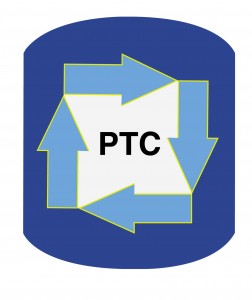There are several interesting and valuable conclusions from the reported PTC N-alkylation shown in the diagram that was scaled up to a 12 mole scale from the 0.5 mole scale.
First, we often highlight the statement “if an anion can be formed and is nucleophilic, then proper choice of phase-transfer catalysis conditions can almost always enhance the transfer and activation of that nucleophilic anion to achieve higher reactivity.” That definitely appears to be the case in this N-alkylation.
Apparently, the N-H of thiazolidine substituted with a cyano-imine in the alpha position is acidic enough to form a sodium salt that can be easily added as an aqueous solution. The phase-transfer catalyst, Aliquat 336, has an average of 27 carbon atoms and is sufficiently organophilic to transfer almost any anion into toluene. Once transferred into the nonpolar toluene phase that rejects water, the N-anion is stripped of its hydration shell that would otherwise reduce its nucleophilicity by hydrogen bonding. The result on the 12 mole scale (shown in the diagram) was a 95% yield at the relatively mild temperature of 60 C. The chloromethyl aromatic alkylating agent did not need additional activation, so a technique such as the addition of co-catalytic iodide was not needed.
Secondly, the inventors screened two solvents at the 0.5 mole scale, using 2.3 mole% Aliquat 336 as phase-transfer catalyst (instead of 1.4 mole%). The result in toluene as the solvent was 92.5% yield and in 1-butanol the yield was 68.2%. We think that the difference is very likely due to the increased presence of hydrogen bonding of the N-anion by 1-butanol (or entrained water) that reduces nucleophilicity of the N-anion.
One more comment is that the patent identifies Aliquat 336 as methyl trioctyl ammonium chloride (MTOAC). There is a common misconception that Aliquat 336 is the single salt that is MTOAC. Aliquat 336 contains both octyl and decyl groups, not just octyl groups of MTOAC. Marc Halpern wrote a detailed article about this very common mistaken belief that has been perpetuated for more than 40 years. Please refer to Marc Halpern’s article written in 2012 about the identity and composition of Aliquat 336 at http://phasetransfer.com/WhatisAliquat336andAdogen464.pdf.
Please note that the single compound that is methyl trioctyl ammonium chloride “MTOAC” that is NOT a mixture of 4 quats with octyl groups and decyl groups, is commercially available. At the moment, 200 kg of the actual MTOAC is available in our affiliate’s plant in Indiana (US). If you are interested in purchasing this material, please contact Marc Halpern of PTC Organics.
When your company must develop or optimize low-cost high-performance N-alkylations, or other PTC-base reactions, now contact Marc Halpern of PTC Organics to achieve the best performance in the shortest development time so your company can benefit from highly specialized expertise in industrial PTC-base technology and achieve high R&D efficiency.


